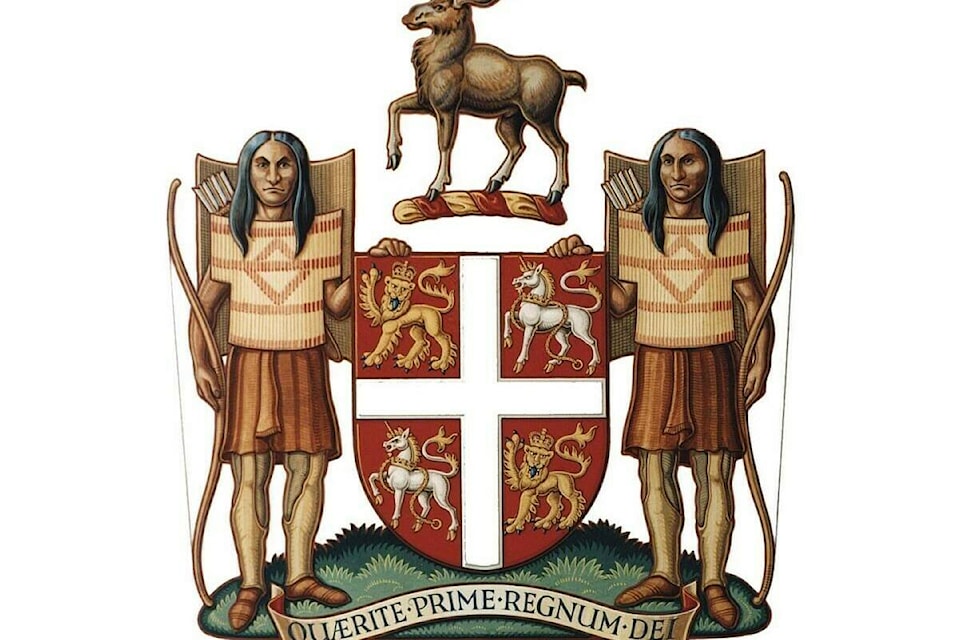The Newfoundland and Labrador government is moving ahead with plans to drop the word “savages” from the official description of the Indigenous people depicted on the province’s nearly 400-year-old coat of arms.
Premier Andrew Furey made the announcement Wednesday as amendments to the Coat of Arms Act were introduced for second reading in the legislature.
The amendments include replacing he word “‘savages” with “Beothuk,” the name of Indigenous people who inhabited the island portion of the province when European settlers arrived.
As well, the government plans to add the name Labrador to the coat of arms.
“Actions that respect the culture and heritage of Indigenous peoples are an important step on the path to reconciliation,” Krista Lynn Howell, minister of municipal and provincial affairs, said in a statement.
“These proposed changes are part of the process of building an inclusive environment in the province and a step forward in ensuring the coat of arms more accurately reflects the peoples and cultures of Newfoundland and Labrador.”
The heraldic emblem features two Beothuk warriors in traditional garb, standing on either side of a red shield.
In June 2018, the governing Liberals said they would drop the archaic description and redesign the coat of arms after Indigenous leaders and the party’s Indigenous Peoples Commission called for changes.
At the time, Labrador politician Randy Edmunds said the Beothuk must be represented to honour an Indigenous group that was wiped out after settlers encroached on their land, resulting in deadly conflicts and the introduction of new diseases. Shawnadithit, the last known surviving Beothuk, died of tuberculosis in St. John’s in June 1829.
Edmunds, an Inuk who was defeated in the 2019 provincial election, said other Indigenous groups should also be recognized. And he said the use of the term savages was offensive.
Last June, the premier confirmed proposed changes would be drafted into legislation following discussions with Indigenous leaders. A meeting earlier that month included representatives from the province’s Mi’kmaq communities, the Innu Nation and Labrador’s Inuit.
Qalipu First Nation Chief Brendan Mitchell later confirmed that everyone at the virtual meeting agreed that the insulting term had to go.
On Wednesday, Furey cited an online questionnaire that found 85 per cent of the 200 respondents said the legal description of the coat of arms should drop the word “savages.”
The original coat of arms was granted by royal warrant from King Charles I of England in 1637. At the time, the island of Newfoundland was known as Terra Nova, and it wasn’t yet joined with Labrador.
The symbol was actually granted to a business syndicate known as the Company of Adventurers to Newfoundland, which seemed to have little knowledge of the area.
Aside from the coarse description of the Beothuk, the coat of arms includes a depiction of a prancing elk, hovering between the two warriors. The animals are not native to Newfoundland and Labrador.
—The Canadian Press
RELATED: N.L. premier vows change: coat of arms description calls Indigenous people ‘savages’
